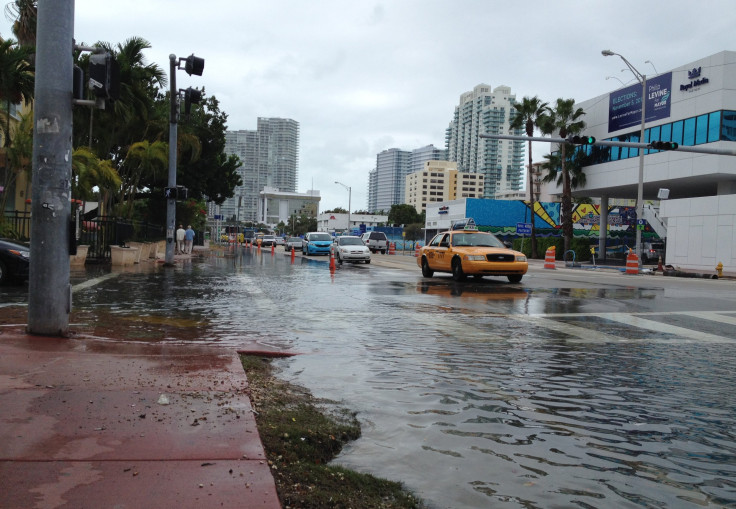Sea Level Rise Accelerating In Southeast US Due To 'Hot Spots'

Sea levels have been rising for years now. Over the last six years the seas rose higher than ever before and they rose consistently, according to the recent State of the Climate 2016 report. But in some areas the seas are rising more quickly than in others. The average sea level rise is at about .13 inches per year, according to NOAA.
A study from the University of Florida published in Geophysical Research Letters shows that sea level is actually rising faster in some areas along the East coast of the United States. This is due to “hot spots” along the coast.
Read: State Of The Climate 2016 Report: Hotter Temperatures, Higher Seas
This discovery was made by UF professor Arnoldo Valle-Levinson who found higher salt concentrations in the Indian River Lagoon along the Atlantic coast of Florida. Upon investigating further he found a trend, sea level rise was happening almost 10 times as fast in the area than records showed they had risen in the past, according to data collected from tidal gauges, according to a release. When he checked the gauges along the rest of the East coast he found that from Cape Hatteras in North Carolina all the way down to Miami in Florida there were “hot spots.”
These hot spots are areas of accelerated sea-level rise that typically last about three to five years, says a release from UF. The location of the hot spots is determined by the Northern Atlantic Oscillation. That is the high and low pressure systems in the Atlantic that impact the weather in the eastern U.S. and the jet stream, according to NOAA. The jet stream then has an effect on the weather and amount of precipitation over the southeastern part of the country. They can be particularly hard to track and predict, so factoring them into climate models, like those that could potentially predict sea level rise, is almost impossible.
These hot spots likely led to the sea level in the southeastern portion of the U.S. rising six times as fast as they are elsewhere in the world. The study illuminates the fact that these hot spots will likely become an added force of sea level rise in the future on top of rise already occurring.
Read: United States On Track To Experience Second Warmest Year Ever
In addition to the NAO, the souther oscillation, called the ENSO cycle also had an impact on the creation of these hot spots. As the sea levels rise quicker in some areas than other, states may find their coastlines vulnerable to more flooding that they aren’t prepared for. “ The important point here is that smooth projections of sea level rise do not capture this variability, so adverse effects of sea level rise may occur before they are predicted to happen,” Andrea Dutton, a co-author on the study told UF, according to a release.
© Copyright IBTimes 2024. All rights reserved.





















